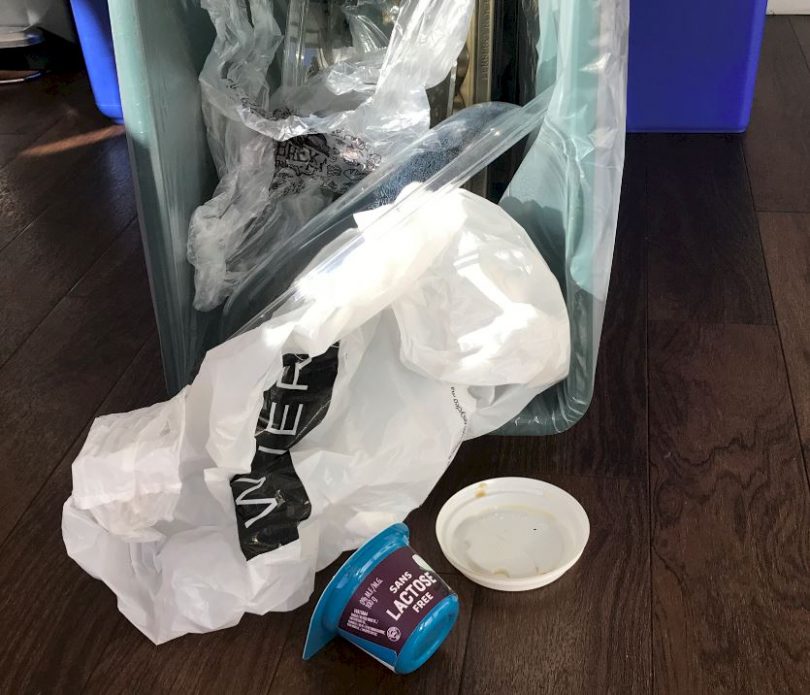We live in a world where single-use plastic products and foods wrapped in plastic are the norm. The amount of plastic being produced has increased nearly 200-fold in 65 years (1950-2015), reaching 381-million tonnes per year. This is an astonishing amount of waste going into landfills given the majority of plastics are not recycled and used for a short time.
St. Paul’s Hospital dietitian Tanya Choy offers some tips for reducing waste at the consumer level.
1. Bring your own grocery bags and say no to plastic bags.
Supermarkets are huge generators of non-organic waste, from plastic used to wrap heads of lettuce to netting around mandarin oranges. As a dietitian, I recommend limiting packaged food in favour of more nutritious choices, which also generate less packaging waste. Multiple apples or potatoes don’t need their own plastic bag. Either use your own mesh bag to keep them together or let them roam free in the basket. You’ll wash them when you get home anyway.
2. Buy ‘naked’ fruits and vegetables.
Say no plastic wrappers or the mesh plastic netting. A great place for produce that’s not attached to plastic is the farmer’s market. Here is a list of farmer’s markets around Vancouver: http://eatlocal.org/. If they are not your cup of tea, from little corner produce shops to big markets like Superstore, there are still options to buy ‘naked’ fruits and vegetables.
3. Bring your own containers to the grocery store.
Bring your own Mason jar or reusable container to the butcher or fish monger to eliminate Styrofoam and cling wrap. Bring separate containers to fill up on rice, beans, nuts and other dry goods in the bulk section of grocery stores. There are also stores in Vancouver that offer zero waste grocery shopping to explore. Here are some Vancouver zero-waste stores: http://vanmag.com/city/3-zero-waste-stores-vancouver/
4. Save money by reducing single-use items at home like cling wrap, plastic sandwich bags or paper towels.
Invest in reusable containers with lids to replace cling wrap. Reusable cloth sandwich bags (very light-weight too!) are sold at many different retailers to keep your sandwich and snacks contained so you can say goodbye to plastic sandwich bags. Use a mini pile of kitchen towels instead of paper towels and when they are dirty, throw them all into the washer. A good estimate is that eliminating these three items in a family of four could save $80-100 per year.
5. Bring your own water bottle and coffee cup.
Doing so can easily reduce single-use bottles and cups while saving money. Most chain coffee shops offer a discount when using your own mug.
5. Request your drink without a straw if you don’t need one – our ocean animals will thank you!
6. Bring your own reusable containers for takeout or leftovers at a restaurant.
In my experience, ALL the restaurants I’ve brought my own containers to have been very receptive. I love this for leftovers because my lunch is packed and ready for the following day, I save the restaurant the money of the container and its zero waste. For takeout, this zero-waste approach replaces the usual container that is used for only about 15 minutes, from food pick up at the restaurant to the trash can.
7. Bring your own roll-up.
Carry your own reusable roll-up (i.e. a knife, fork & spoon, rolled up in a cloth napkin) in your bag or leave it at your desk to reduce the use of single-use plastic cutlery and paper napkins





